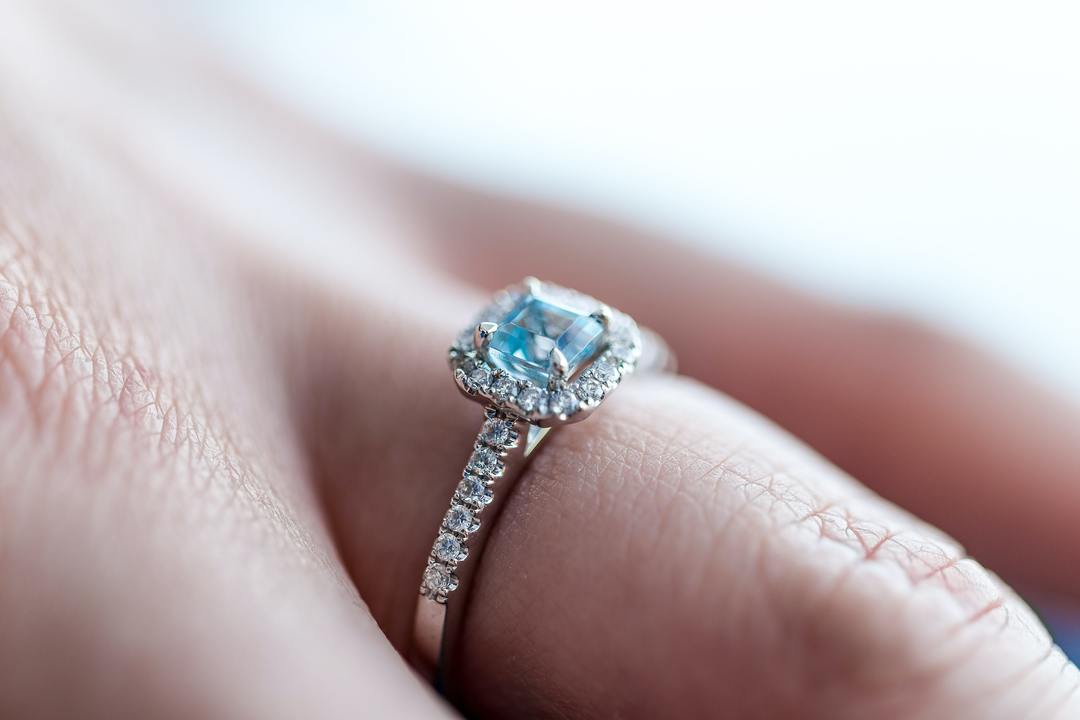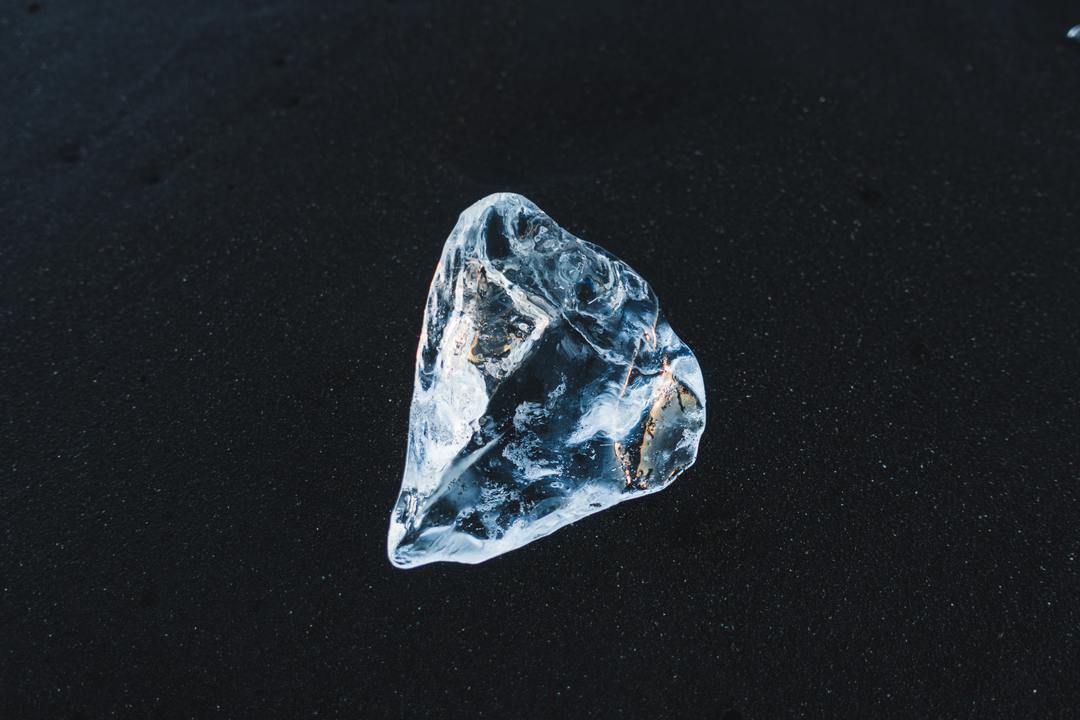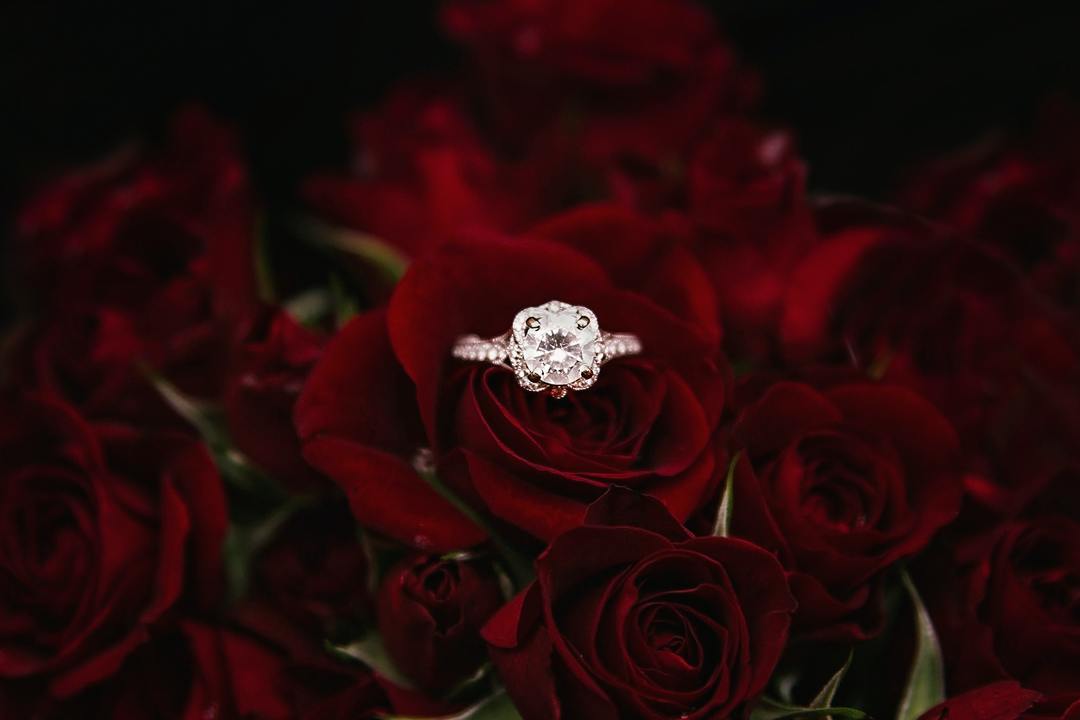- Expert advice/
- Getting engaged/
- Rings/
- How to Tell the Clarity of Diamonds
- Rings
How to Tell the Clarity of Diamonds
Wondering why the clarity of diamonds is so important? Read on to become an expert.
Last updated February 5, 2024

For many modern couples, first comes love and then—before marriage—comes the engagement ring. Whether you’re looking for a diamond to ask your special someone the most important question of your life, or you want to add some bling to your wedding band, there’s a lot that goes into selecting the perfect rock. We’re breaking it all down so that you can confidently choose a diamond that will dazzle for years to come.
How Are Diamonds Made?
First thing’s first, if you’re set on a diamond, instead of a diamond alternative (like a sapphire or moissanite), there are two main options: natural (mined) diamonds or lab-grown diamonds. Both types have the same chemical, physical, and optical properties and are graded on the same scale. Odds are, you’ve heard of the 4Cs of diamond quality. This clarity grading system—which judges the carat, cut, color, and clarity of the diamond—determines a stone’s overall quality. This, in turn, determines how much a diamond is worth and how much it’s going to cost to make it yours.

What Does Clarity of Diamonds Mean?
In short, a diamond’s clarity is how clear and clean the rock looks. Basically, all diamonds contain "birthmarks” and those small imperfections inside the diamond (called diamond inclusions) or on its surface (called blemishes) are what affect where the diamond lands on the clarity scale. The better the rating is on the scale, the better the quality of the diamond itself.
Why Does a Diamond’s Clarity Matter?
The clarity grading of the diamond can determine how brilliant (re: sparkly) it looks, because significant inclusions and blemishes interfere with the path of light through the diamond. More diamond inclusions and blemishes equals potentially fewer people saying, “Oh my gosh, it’s so glittery!” Additionally, diamonds with poor clarity grades are also more fragile. Since they have more flaws that can take away from the diamond’s strength, they can be more prone to cracking or chipping. Don’t worry—we’ll walk you through selecting a diamond clarity that not only makes sense strength and beauty-wise, but also financially so that your ring can last a lifetime and beyond.
Because diamonds are formed under extreme heat and pressure—whether beneath the Earth or in a lab—small imperfections are very common. In fact, flawless diamonds are so rare (and expensive) that they’re usually just purchased by elite jewelers or collectors. Almost all diamonds have at least a small flaw (inclusion) or two. While diamond cutters try to cut the stones so that inclusions are not visible through the table (the flat surface at the top) of the finished diamond, it’s not always possible. Ultimately, most minor flaws and inclusions won’t take away from the beauty of the stone.
How Is Diamond Clarity Determined?
It’s the location, the level of visibility, and the nature of inclusions that come together to determine a diamond’s clarity grade. However, what makes clarity tricky is that the flaws are so small and sometimes subjective, therefore it can be hard for even the most skilled professionals to determine the grade. Often, multiple gemologists have to work together to establish a final clarity grade. Since it’s challenging for the pros to note the inclusions and blemishes, it’s important to note that most of the time the naked eye can’t even see these flaws in highly-rated diamonds.
So, how do these pros rate diamonds if they can’t even see the flaws? They use the GIA Diamond Clarity Scale to essentially grade the rock. By looking at the diamond under a 10x magnification, the GIA (Gemological Institute of America) or another professional gemologist considers the size, color, reflectivity, and position of every flaw under magnification.
The GIA Diamond Clarity Scale
The clarity scale used today was invented in the 1950s by Richard T. Liddicoat, Jr., a former president of GIA. It’s been the universal standard for diamonds ever since, whether they’re rated by the GIA or not. The scale has six categories, with some divided for a total of 11 grades. These clarity grades range from flawless (FL) to included (I) to help determine the value of the diamond. Naturally, flawless is the most expensive choice, so plenty of people venture to the VS2 region to lower the costs. The plus side is that almost no one will notice if there are a few teeny, tiny flaws in the diamond, especially if it looks eye-clean (meaning that you can’t see the inclusions with your naked eye). Here’s how the guide breaks down the clarity of diamonds:

Flawless (FL) Diamonds
Flawless diamonds are just that, they have zero inclusions under 10x magnification. There’s no higher diamond clarity than that of a flawless diamond. Only about two percent of diamonds fall under the FL or IF categories, which makes them extremely rare (and expensive).
Internally Flawless (IF) Diamonds
Just like flawless diamonds, internally flawless diamonds are very rare and have no internal flaws. While they might have tiny surface blemishes that are visible under 10x magnification, usually professional gemologists have to look at the stone under 60x magnification to find these flaws.
Very Very Slightly (VVS) Included Diamonds
Very, very slightly included diamonds have inclusions that are, well, very, very difficult to see under 10x magnification. The category is broken up into two sections, but both of them yield extremely high-quality (and pricey) diamonds. Inclusions in VVS stones are not easy to detect, even under 10x magnification (and chances are, unless you’re a pro, you won’t be able to find them). Even trained professionals find these inclusions only after intense searching.
VVS1: Inclusions are just barely visible (if at all) under 10x magnification. VVS2: Inclusions are barely visible under 10x magnification. Even when the imperfections are visible, they’re quite difficult to find.
Very Slightly (VS) Included Diamonds
When viewing a very slightly included diamond under 10x magnification, the average person can only see the flaws with the help of a jeweler pointing them out. VS diamonds are the most popular because they are eye-clean and appear flawless to the naked eye, but sell at a lower price than actual flawless diamonds.
VS1: Inclusions are barely visible under 10x magnification. When looking for VS1 clarity inclusions under magnification, it can take some time to find them. VS2: Inclusions are almost always noticeable at 10x magnification but are usually invisible to the naked eye.
Slightly Included (SI) Diamonds
SI diamonds are very subjective, which is why you should always give them close consideration (and a thorough look under magnification) when making the purchase. Here, the carat and cut of the diamond really makes a difference in regards to the clarity. Stones that are smaller than one carat, and in cuts other than asscher or emerald can appear eye-clean, but larger stones in those specific diamond cuts might come with some visible flaws. If you’re looking for a more budget-friendly option, consider an SI diamond after close examination. Round, oval, pear, heart, cushion, radiant, marquise, or princess cuts are great options for an SI diamond.
SI1: Inclusions are easily found under magnification. In most shapes (excluding step cuts such as asscher and emerald Cut diamonds), SI1 clarity inclusions are almost always clear to the naked eye. SI2: Inclusions are seen clearly with the help of magnification. In step cuts such as asscher and emerald cut diamonds, SI2 clarity inclusions are visible to the naked eye.
Included (I) Diamonds
Many jewelry retailers don’t carry I-graded diamonds since their flaws are visible to the naked eye. If you’re looking for a large stone on a budget, chances are you’ll come across included diamonds. Purchase with caution, as their inclusions can potentially lead to additional cracking or chipping. Still, you can come across the occasional I1 diamond that looks eye-clean, so don’t write the rock off just because of its grade.
I1: Visible inclusions to the naked eye. I2: Inclusions easily visible to the naked eye. I3: Inclusions are very easily visible to the naked eye.
The most important component to keep in mind, in regard to clarity, is that the rock looks eye-clean, so that it can proudly showcase your love. Wherever the rock lands on the scale, it’s the meaning behind the gem that will dazzle for a lifetime.
- Expert advice/
- Getting engaged/
- Rings/
- How to Tell the Clarity of Diamonds
Find even more wedding ideas, inspo, tips, and tricks
We’ve got wedding planning advice on everything from save the dates to wedding cakes.